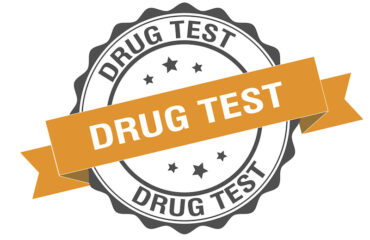The Nuts and Bolts of Drug Testing – Part 2 – Justice Speaks Podcast
Best practices for drug testing require frequent, random, long term, and comprehensive testing. This makes it more difficult for participants to use alcohol and other drugs between tests[1] and ultimately, more likely for success in a Treatment Court program.
Frequent Testing
The use of most illegal and addictive drugs, depending upon the assay, (analysis of a sample to determine the presence, absence, or quantity of one or more drugs) can be discovered during a 24 to 72 hours period. Therefore, testing less than twice a week creates a gap that allows participants to use without being detected.[2] Studies have established that courts that test more frequently reduce recidivism by 38 percent.[3]
Treatment Courts that test participants two or more times per week throughout the entire program produce significantly greater benefits including higher graduation rates and lower recidivism rates,[4] and participants report that drug testing is one of the strongest factors in keeping them from using.[5]
Random Testing
Not only must the drug testing be frequent, it must be random. This helps to ensure an effective drug testing program.[6] Being random includes testing on weekends and holidays with the probability of being tested on weekends and holidays the same as being tested during the weekdays.[7] For an accurate test, participants must provide a specimen no later than eight hours after being notified.[8] But for drug tests with short windows of detection, like oral fluid tests, the participant must provide a sample within four hours of notification.[9]

Test for the full range of substances that are most likely to be used by your Treatment Court participants.
Long Term Testing
Next, drug testing should start upon entry into the program and continue with no interruptions until the day of graduation. Drug testing should be the last thing reduced or stopped in a program, as it is the most objective measure to ensure participants remain drug free. Participants have reported that long term testing helps them remain drug free.[10] The research also supports long term testing of participants to be successful in the program.
Comprehensive Testing
Finally, when testing, you should test for the full range of substances that are most likely to be used by your Treatment Court participants or in your community. However, new substances of abuse are constantly being sought out by offenders in order to use without detection, therefore occasionally test for a wider range of potential drugs of abuse. That will aid you in keeping ahead of your participants and possibly determine what new substance(s) might be emerging.[11]
Effective alcohol and other drug testing provides the only objective measure of treatment effectiveness that Court staff have in assessing participant progress; everything else is opinion. The results of these tests provide the basis for the underlying pillars for participant success. If alcohol and other drug testing is not being conducted in accordance with existing best practices, then the integrity and success of your program could be at stake.
 Top Ten Drug Testing Tips
Top Ten Drug Testing Tips
Click here to get JSI’s publication on the Top Ten Drug Testing Tips for Implementation and Top Ten Drug Testing Tips for Observing Drug Testing.
Drug Testing Nuts and Bolts – Part One
To listen to Part One on the Nuts and Bolts of Drug Testing, click here.
Footnotes:
[2]Crosby, R., Carlson, G., Specker., Simulation of Drug Use and Urine Screen Patterns, Journal of Addictive Diseases, Vol. 22(3) (2003); DuPont, R., Griffin, D., Siskin, B., Shiraki, S., Katze, E., Random Drug Tests at Work: The Probability of Identifying Frequent and Infrequent Users of Illicit Drugs. Journal of Addictive Diseases, Vol. 14(3) (1995).
[3]Drug Courts: A Smart Approach to Criminal Justice, Office of National Drug Control Policy, May 31, 2011.
[4] Shannon M. Carey, Ph.D., Michael W. Finigan, Ph.D., Kimberly Pukstas, Ph.D, Exploring the Key Components of Drug Courts: A Comparative Study of 18 Adult Drug Courts on Practices, Outcomes and Costs 42-42 (2011)
[6] Douglas B. Marlowe, J.D., Ph.D., Carson L. Fox, Jr., J.D., et al., Adult Drug Court Best Practice Standards Volume II, National Association Of Drug Court Professionals, Alexandria, Virginia, 2015. NOTE: The order and placement of the NADCP Best Practices has been modified for organizational purposes.
[10] Found at: https://www.ncjrs.gov/html/bja/honestchance/chp6c.html
[11] Adult Drug Court Standards, Vol. II, supra.
Get more articles like this
in your inbox
Subscribe to our mailing list and get the latest information and updates to your email inbox.
Thank you for subscribing.
Something went wrong.







